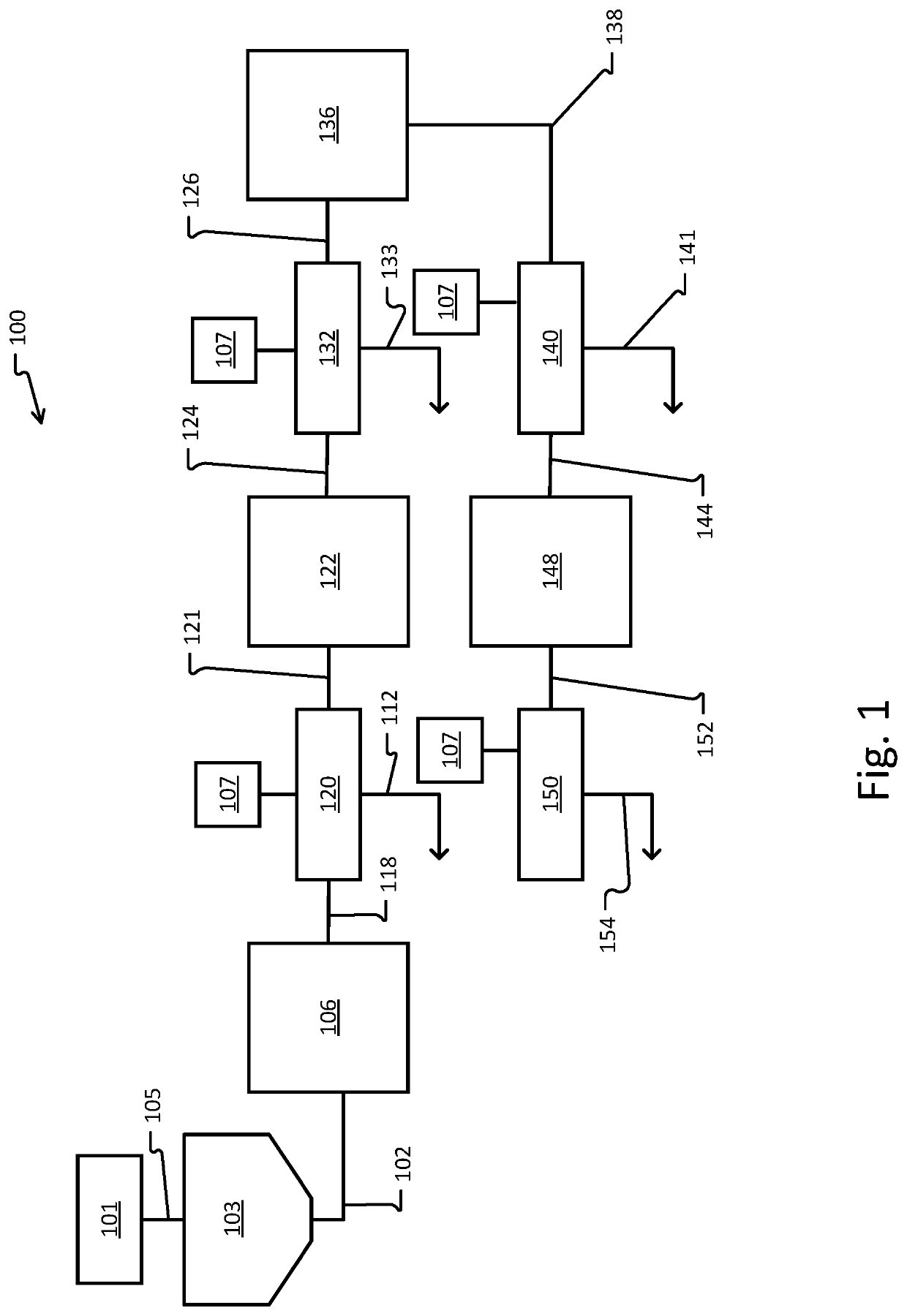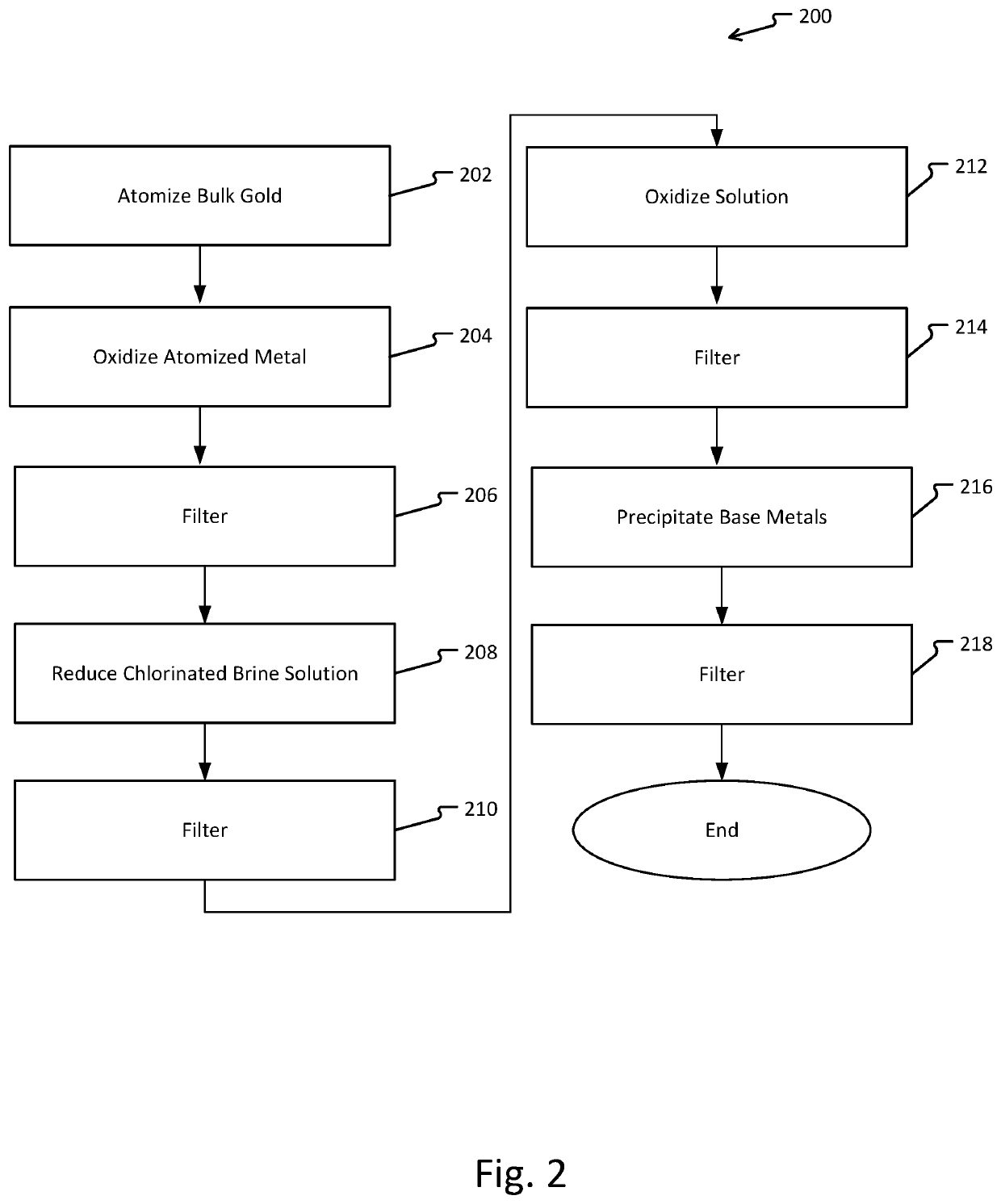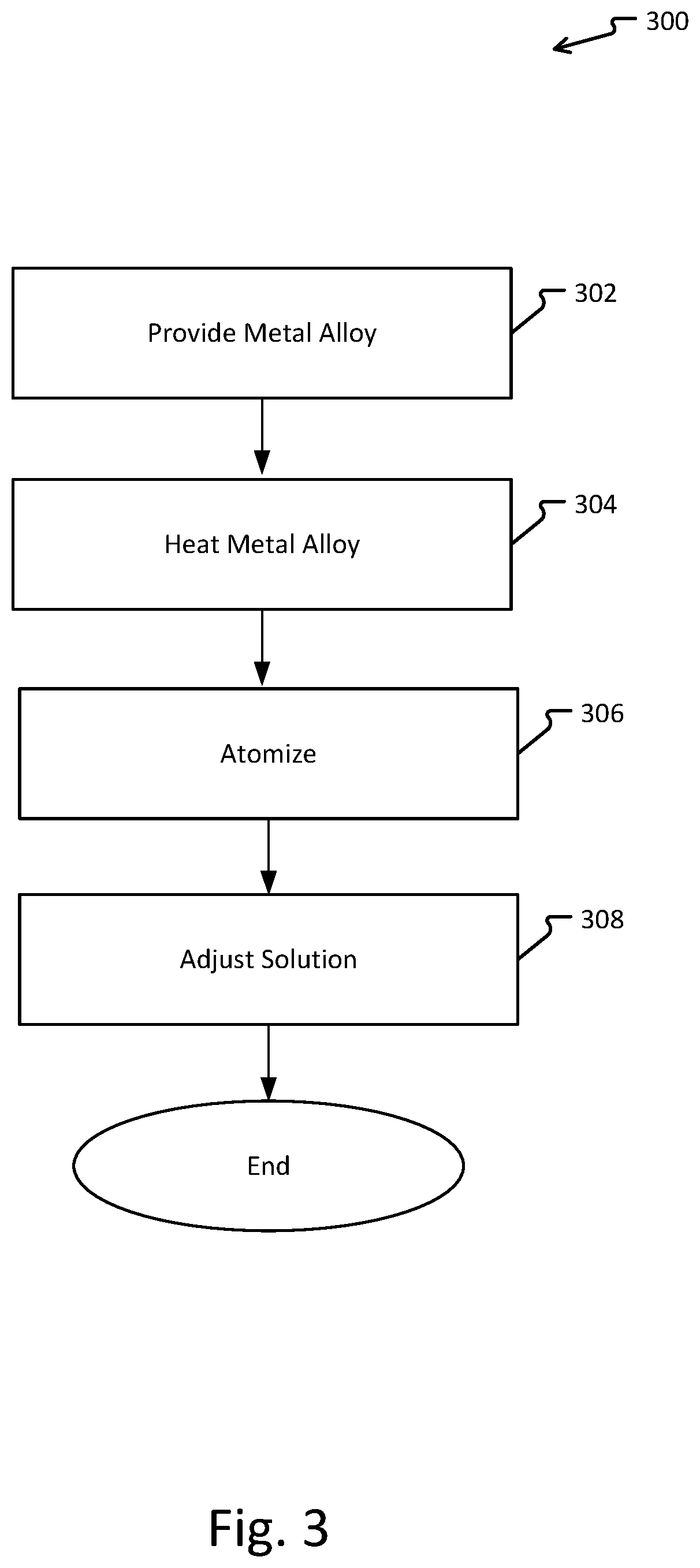Metal refinement
a technology of metal refinement and metal scrap, applied in the field of metal refinement, can solve the problems of long batch processing time, high labor intensity, hazardous working conditions, etc., and achieve the effects of reducing labor intensity, reducing energy needs, and reducing chemical usag
- Summary
- Abstract
- Description
- Claims
- Application Information
AI Technical Summary
Benefits of technology
Problems solved by technology
Method used
Image
Examples
examples
[0066]In a first example, a metal alloy comprising 50% gold, 7% silver, 36% copper, and 7% zinc was formed from pure elemental metals. The metal alloy was melted by heating the metal in a crucible. The molten metal was poured into an atomizer having high pressure water jets similar to the atomizers described herein. The resulting gold metal alloy powder was passed through a 320 mesh to verify the size of the particles and remove any particles of larger size. The resulting mesh powder was placed into a 900 mL H2O, 100 mL 10% HCl, 50 grams NaCl, 0.5 mL isopropyl alcohol solution. The ratio of mesh powder was 8 oz of mesh powder per liter of the solution. The solution was placed in a reactor system, similar to the reactor system described with reference to FIG. 4. Chlorine gas (Cl2) was pumped into the solution for 50 minutes at a rate of 0.0778 standard cubic feet per minute (scfm) using a Venturi system. At minute 50, a millivolt reading stabilized at 1140, where it did not change fo...
example 3
, Platinum Chloride and Palladium Chloride
[0084]In an additional example, to a reaction vessel which is equipped with a pump, a Venturi system to draw the chlorine gas into the reactor under vacuum, a thermometer, cooling bath, a millivoltmeter was add multiple sets of filtrate (3.5 L) from a first filtrate from a gold isolation. The solution comprised platinum (13.1 g, 67.12 mmol) and palladium (13 g, 123.33 mmol) as chlorides. Ammonium chloride (50 g, 0.934 mol) was added to the reaction vessel along with isopropyl alcohol (1.0 mL). Chlorine gas was added using a Venturi system to the reaction vessel under vacuum and at a rate of 0.0056 standard cubic feet per minute (scfm). At 27° C. both the platinum and palladium metals were converted to their respective chloride derivatives.
[0085]The ammonium chloroplatinate precipitates immediately at ambient temperature. After 20 to 30 minutes of stirring, the ammonium chloroplatinate was isolated by filtration. To the filtrate containing pa...
PUM
| Property | Measurement | Unit |
|---|---|---|
| Temperature | aaaaa | aaaaa |
| Temperature | aaaaa | aaaaa |
| Fraction | aaaaa | aaaaa |
Abstract
Description
Claims
Application Information
 Login to View More
Login to View More - R&D
- Intellectual Property
- Life Sciences
- Materials
- Tech Scout
- Unparalleled Data Quality
- Higher Quality Content
- 60% Fewer Hallucinations
Browse by: Latest US Patents, China's latest patents, Technical Efficacy Thesaurus, Application Domain, Technology Topic, Popular Technical Reports.
© 2025 PatSnap. All rights reserved.Legal|Privacy policy|Modern Slavery Act Transparency Statement|Sitemap|About US| Contact US: help@patsnap.com



